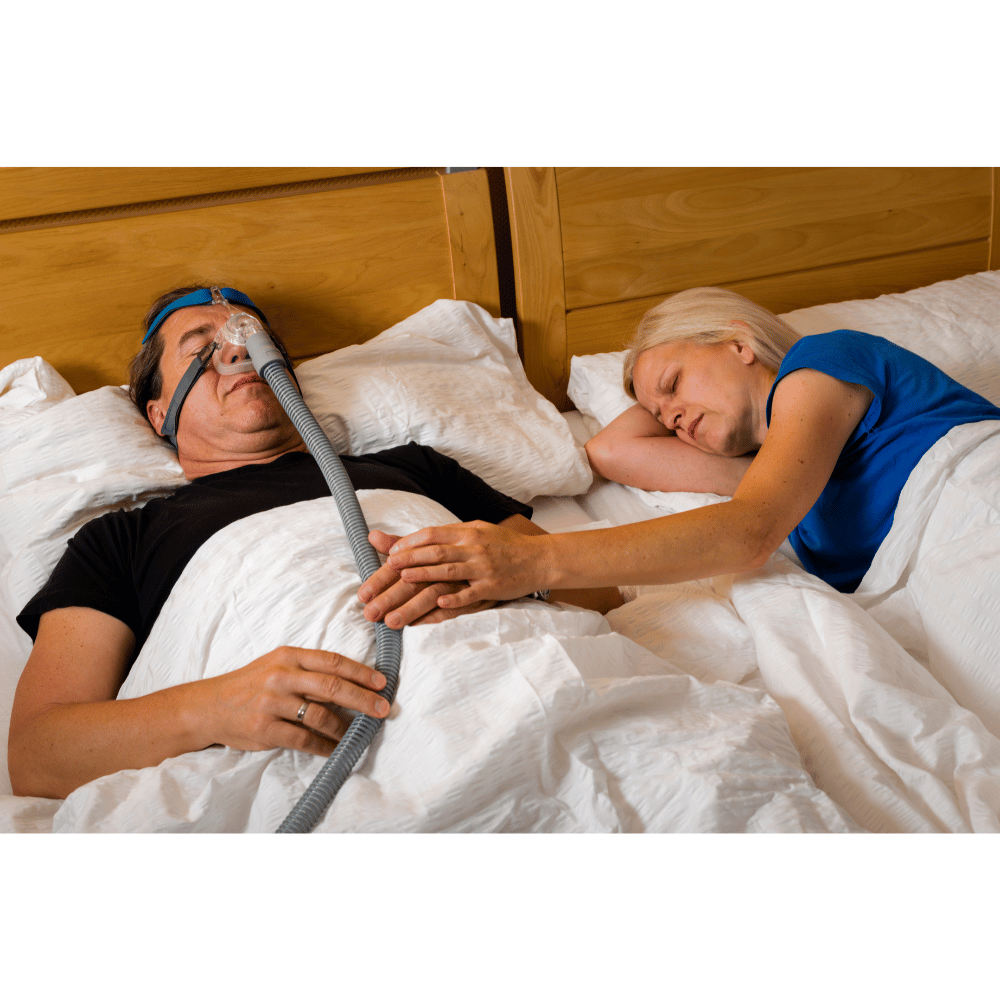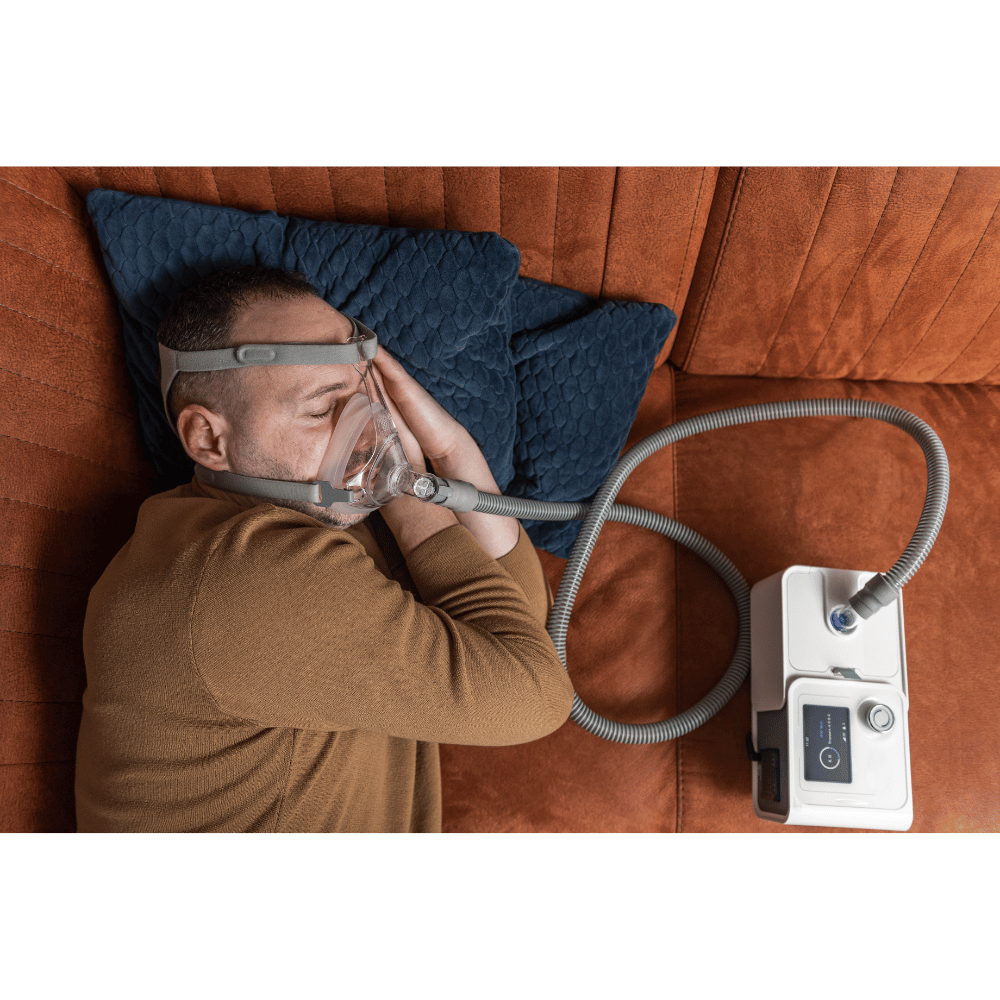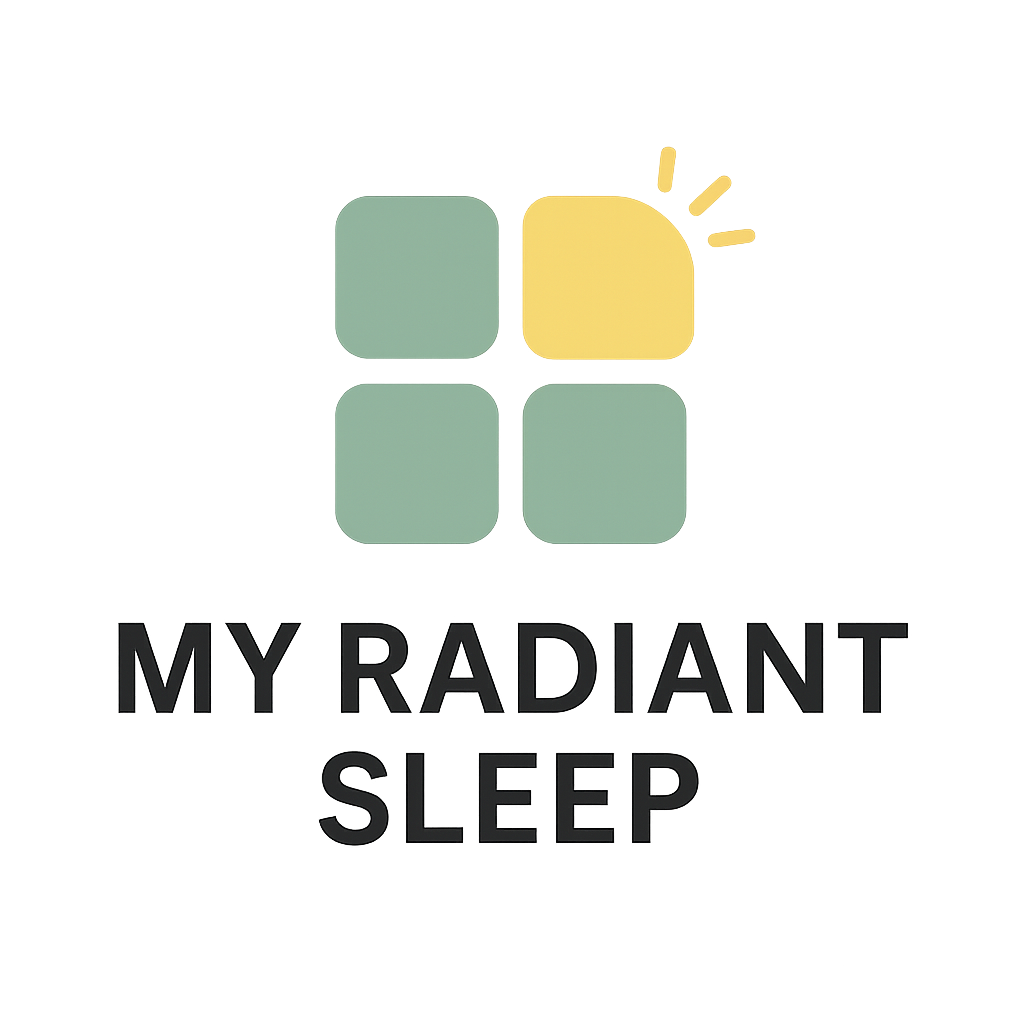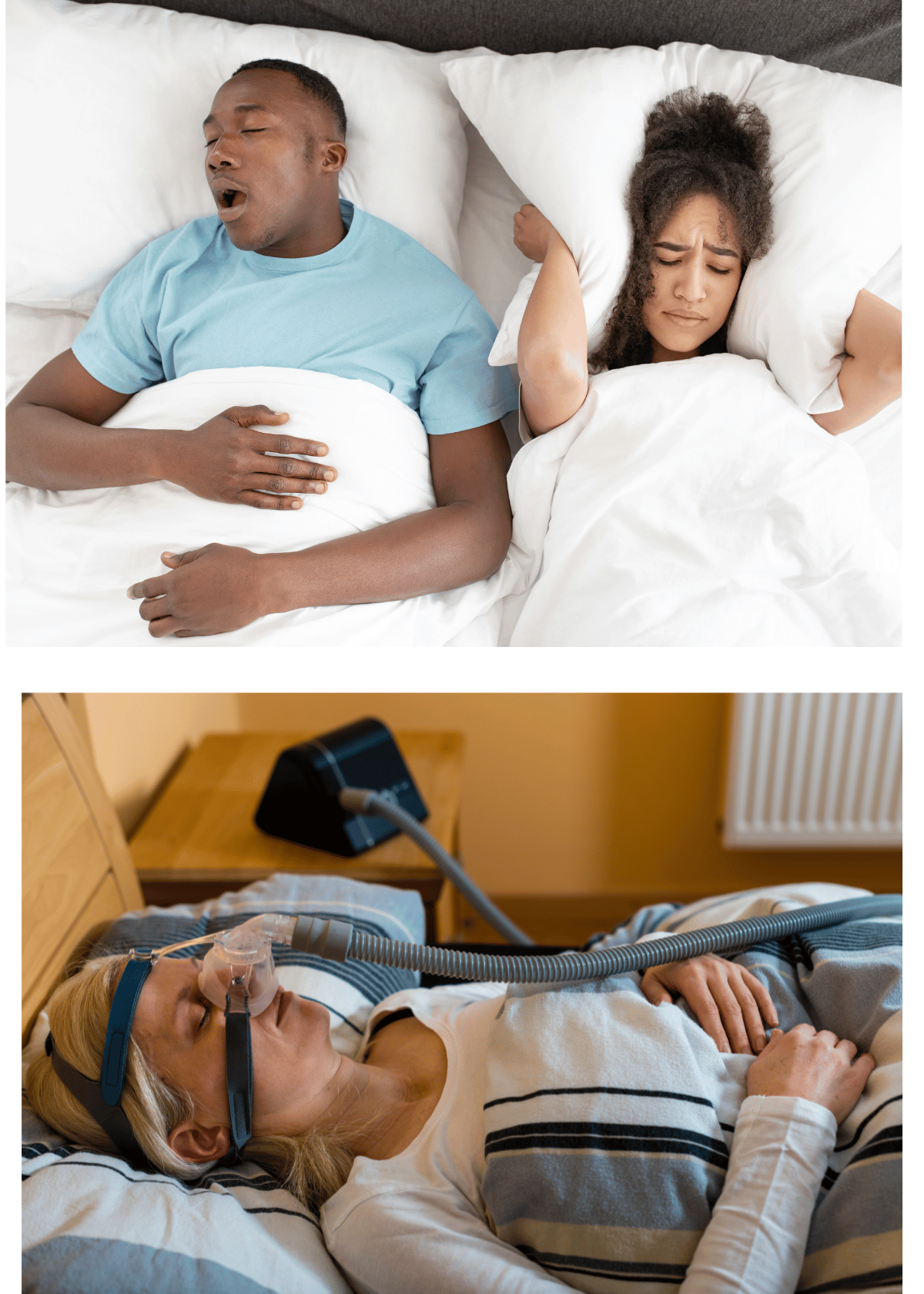Last Update: 07/09/2025)
This content is created with integrity and impartiality; we do not receive direct compensation for this review. See our Mission and Core Values here.
Obstructive Sleep Apnea (OSA), classified under ICD-10, presents a significant health concern worldwide.
Characterized by recurrent airway collapse during sleep, OSA disrupts normal breathing patterns, leading to fragmented sleep and diminished oxygen levels.
Typical symptoms include loud snoring, daytime fatigue, and morning headaches. Left untreated, OSA increases the risk of hypertension, heart disease, and stroke.
This guide covers adult OSA treatments and highlights the value of early detection for better health and quality of life.
Understanding Sleep Apnea and Its Impacts
Sleep apnea is a common sleep disorder characterized by repeated interruptions in breathing during sleep. These interruptions happen when throat muscles overly relax, blocking the airway and causing oxygen loss in moderate to severe OSA.
Obstructive sleep apnea (OSA) is a serious sleep disorder where breathing repeatedly stops due to associated upper airway obstruction.
This condition may occur multiple times each night, leading to loud snoring episodes, disrupted sleep patterns, and increased risk for cardiovascular disease and other health complications.
Adult obstructive sleep apnea and child obstructive sleep apnea require age-specific approaches.
Child obstructive sleep apnea often has different causes than adult cases, requiring specific code usage and thorough evaluation of the child’s medical history.
While mild forms of sleep apnea can result in symptoms like snoring and fatigue, moderate to severe OSA poses more serious health risks. Prolonged oxygen deprivation can lead to complications such as coronary artery disease, irregular heartbeat, and other cardiovascular conditions.
To better manage symptoms of sleep apnea at home, explore our guide on the best sleep apnea monitor picks for tracking breathing and rest.
Diagnosis of Obstructive Sleep Apnea Adult
Recognizing Sleep Apnea Symptoms and Risk Factors
Obstructive Sleep Apnea (adult/pediatric) is a sleep disorder marked by symptoms like loud snoring, daytime sleepiness, and breathing pauses during sleep. Risk factors include obesity, older age, male gender, and anatomical issues like enlarged tonsils or a recessed jaw.
Obstructive sleep apnea ICD-10 is coded as G47.33, allowing healthcare professionals to document this common but serious sleep disorder accurately.
Proper diagnosis, supported by correct coding practices, helps identify higher-risk patients and ensures appropriate care and reimbursement.

PEDIATRIC OBSTRUCTIVE SLEEP APNEA VS. ADULT OBSTRUCTIVE SLEEP APNEA?
Obstructive sleep apnea (OSA) affects both children and adults, but its presentation, underlying causes, and associated conditions vary significantly between these groups.
Pediatric Obstructive Sleep Apnea
Obstructive Sleep Apnea (ICD-10 code G47.33) occurs when the muscles in the throat relax excessively during sleep. As a result, breathing stops momentarily, sometimes for several seconds.
CHILDREN WITH OSA MAY EXHIBIT SYMPTOMS SUCH AS:
- Daytime tiredness despite adequate sleep duration.
- Behavioral issues like hyperactivity, inattention, or mood swings, often mimicking conditions such as ADHD.
If you struggle with sleep disruptions, our expert guide to the top mattress recommendations for sleep disorders offers targeted solutions to support better rest.
ADULT OBSTRUCTIVE SLEEP APNEA SYNDROME
Adult OSA is often linked to obesity and health issues like Pickwickian syndrome. It involves repeated airway obstruction during sleep, disrupting rest and oxygen levels. Cardiovascular risks such as hypertension and heart failure may arise.
- Loud, habitual snoring (often reported by partners)
- Daytime fatigue, poor concentration, and memory issues
Diagnostic Tools and Early Intervention
Tools like home sleep apnea testing and physical examination are vital for early diagnosis. Recognizing signs such as sleep terrors, apnea NOS, or nonobstructive alveolar hypoventilation helps identify underlying contributors and improves patient outcomes.
Sleep-related hypoventilation and related nonobstructive alveolar hypoventilation may require additional codes to reflect various health issues or associated underlying conditions.
PULMONARY ARTERIAL PRESSURE IN OSA
OSA raises pulmonary arterial pressures in both age groups but is more severe in adults due to long-term apnea episodes. This contributes to added cardiovascular strain.
Cheyne-Stokes Breathing: Adults vs. Children
- Adults: Common in those with heart failure or brain injury
- Children: Rare; indicates serious health issues when present
Understanding the biological purpose of rest begins with asking why we really need sleep and how sleep architecture affects healing and cognition
SHARED SYMPTOMS AND UNIQUE FEATURES
- Both age groups experience daytime fatigue and sleep apneas
- Pediatric OSA stems from anatomical or developmental factors
- Adult OSA is more associated with comorbid conditions and lifestyle
ICD-10 Codes for Accurate Diagnosis
The ICD-10 system helps with the accurate diagnosis and classification of sleep apnea types. G47.33 identifies obstructive sleep apnea adult, while G47.31 refers to central sleep apnea, caused by brain-related issues in the nervous system.
Other codes include sleep apnea of newborn, primary central sleep apnea, and sleep apnea unspecified.
Treatment Options for Obstructive Sleep Apnea
CONTINUOUS POSITIVE AIRWAY PRESSURE (CPAP) THERAPY
- Continuous Positive Airway Pressure (CPAP) therapy is the main treatment for adults with moderate to severe obstructive sleep apnea (OSA).
- The procedure involves wearing a mask connected to a machine that delivers a constant air stream.
✅ Pros:
- Provides immediate and effective airway support.
- Improves sleep quality and daytime energy levels significantly.
❌ Cons:
- Some users experience discomfort or difficulty adjusting to the mask.
ORAL APPLIANCES AND DENTAL DEVICES
- Oral appliances and dental devices offer an alternative treatment option for patients with mild to mild OSA or those who cannot tolerate CPAP therapy.
- As for Mild sleep apnea, it is a form of sleep apnea where individuals experience 5–15 breathing interruptions per hour during sleep.
✅ Pros:
- A comfortable and portable alternative to CPAP therapy.
- Effectively repositions the jaw to reduce airway obstruction.
❌ Cons:
- May cause jaw pain or dental misalignment over time.
A poor mattress could be harming your body. Learn more in our post on how mattresses affect sleep quality and your long-term health.
SURGICAL INTERVENTIONS AND PROCEDURES
- Surgical interventions are considered when conservative treatments such as CPAP therapy and oral appliances fail to manage OSA adequately.
- Surgical options aim to enlarge the upper airway and reduce obstructions.
- Common surgical procedures for OSA include uvulopalatopharyngoplasty (UPPP), tonsillectomy, adenoidectomy, and maxillomandibular advancement (MMA).
✅ Pros:
- Provides long-term solutions for anatomical obstructions.
- Reduces or eliminates sleep apnea symptoms for many patients.
❌ Cons:
- Involves surgical risks, including infection and extended recovery time.

MEDICATIONS AND PHARMACOLOGICAL TREATMENTS
Overview of Medications Used in OSA Management
Medications can support OSA symptom relief, especially when congestion or oral appliance discomfort is present.
- Nasal decongestants/steroids reduce inflammation and improve airflow
- Best for short-term use during allergy flare-ups
- Adjunct meds (e.g., saliva substitutes) help manage side effects of oral appliances like dry mouth
Creating an ideal bedroom starts with choosing the right surfaces. See how mattresses and pillows shape your sleep and improve relaxation.
UNDERSTANDING ICD-10 CODING FOR PRESCRIPTIONS
ICD-10 coding ensures clear documentation when prescribing medications for OSA.
- Common code: G47.33 for Obstructive Sleep Apnea
- Enables consistent medical records and treatment tracking
Benefits of ICD-10 Coding:
- Streamlines communication between providers
- Reduces billing errors
- Supports accurate documentation of prescription intent
FINANCIAL IMPLICATIONS AND PATIENT RESPONSIBILITIES
- Review insurance documents carefully to avoid billing surprises
- The Importance of Documentation and Reimbursement
- Accurate coding and thorough documentation support proper patient care, enable appropriate reimbursement, and reduce claim denials.
- Coding for nonorganic sleep disorders, related hypoventilation in conditions classified elsewhere, and congenital central alveolar hypoventilation ensures clarity in patient records and billing
Effective treatment involves lifestyle adjustments, such as weight loss, alongside proper coding and documentation. Whether dealing with high altitudes, conditions classified elsewhere, or idiopathic sleep related cases, staying updated ensures high-quality, personalized care.
Combining lifestyle changes with coding accuracy helps address other medical conditions, improving outcomes. Healthcare providers must stay informed.
If your nights feel restless, follow our practical list of top 10 sleep tips for deeper sleep and more energized days.
CONCLUSION:
The comprehensive treatment options outlined in the Obstructive Sleep Apnea Treatment option offer effective avenues for managing obstructive sleep apnea.
From CPAP therapy to lifestyle modifications, patients have diverse strategies to address their condition.
Individuals can confidently navigate their journey by understanding the importance of treatment adherence and seeking support from healthcare providers.
Empowering patients with knowledge and resources encourages engagement and improves quality of life despite obstructive sleep apnea challenges.
FAQs:
What's the ICD-10 code for obstructive sleep apnea?
The ICD-10 code for obstructive sleep apnea is G47.33. This code is used by healthcare providers to classify and document cases of sleep apnea caused by upper airway obstruction during sleep.
What does obstructive sleep apnea G47 33 mean?
Code G47.33 specifically refers to obstructive sleep apnea syndrome in the ICD-10 system. It indicates repeated airway blockages during sleep, resulting in disrupted breathing and poor rest quality. This diagnosis guides both medical interventions and health insurance claims for appropriate treatment support.
What is the ICD-10 code for G47 39?
ICD-10 code G47.39 represents other sleep apnea, used when the condition doesn’t fit criteria for obstructive (G47.33) or central sleep apnea (G47.31). This catch-all code covers less common sleep apnea types that still require clinical attention and accurate documentation.
What is the ICD-10 code for G47 31?
Code G47.31 in the ICD-10 system refers to central sleep apnea. This form of sleep apnea results from brain signaling issues rather than airway obstruction. Proper coding ensures patients receive targeted evaluation and care based on the underlying neurological cause.
DEFINITION OF TECHNICAL TERMS
ICD-10-CM code G47.33 identifies a specific type of obstructive sleep apnea in the ICD-10-CM coding system, part of the International Classification of Diseases.
Child obstructive sleep apnea and sleep-related nonobstructive alveolar hypoventilation fall under different coding guidelines, depending on the diagnosis and related conditions classified elsewhere.
Proper coding requires a clinical study, accurate history, and understanding of diseases of the nervous system when classifying cases like sleep terrors or high altitude periodic breathing.
The system also tracks nonorganic sleep disorders, ensuring sleep issues unrelated to psychiatric or physical illness are documented correctly.
Following ICD-10-CM ensures precise classification, linking symptoms like frequent partial arousals to the correct diagnosis and billing practices.
REFERENCES
Books:
- Dr. Shiela Ber, Dr. Meir Kryger, and Dr. Michel Guilleminault. Sleep Apnea: The Phantom of the Night. Springer; 2007.
- Sleep Disorders and Sleep Deprivation: An Unmet Public Health Problem" edited by Institute of Medicine (US) Committee on Sleep Medicine and Research - National Academies Press; 2006
- W. Chris Winter, M.D. The Sleep Solution: Why Your Sleep is Broken and How to Fix It. - Berkley; 2017.
- Paul Glovinsky, Ph.D., and Art Spielman, Ph.D. The Insomnia Answer: A Personalized Program for Identifying and Overcoming the Three Types of Insomnia. - Avery; 2006.
- Dr. William C. Dement and Christopher Vaughan. The Promise of Sleep: A Pioneer in Sleep Medicine Explores the Vital Connection Between Health, Happiness, and a Good Night's Sleep. - Delacorte Press; 1999.
Websites:
- American Academy of Sleep Medicine (AASM): https://aasm.org/
- National Sleep Foundation: https://www.sleepfoundation.org/
- American Sleep Apnea Association: https://www.sleepapnea.org/
- Mayo Clinic - Sleep Apnea: https://www.mayoclinic.org/diseases-conditions/sleep-apnea/
- WebMD - Sleep Apnea Health Center: https://www.webmd.com/sleep-disorders/sleep-apnea/
- Diagnosis and Management of Obstructive Sleep Apnea– MDPI Journal:This systematic review discusses current diagnostic methods and treatment options for OSA.







